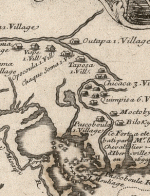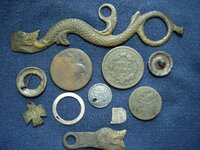Kansasippi
Jr. Member
In the limited experience I have had, I found that camps were of several types. I have hunted an area that was occupied by people who had 'high' water and 'low' water camps.
I would at least entertain searches in the areas you suggest, as I agree with the turning the map it does resemble the topo of today, and keep an eye out for high ground near one of your suspect spots. Hopefully there will be a plowed feild nearby and after a rain you may find some points exposed.
Just a thought.....
I would at least entertain searches in the areas you suggest, as I agree with the turning the map it does resemble the topo of today, and keep an eye out for high ground near one of your suspect spots. Hopefully there will be a plowed feild nearby and after a rain you may find some points exposed.
Just a thought.....







